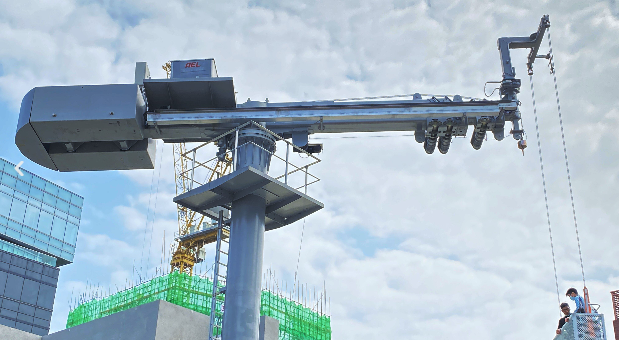In the realm of modern architecture and building maintenance, the Building Maintenance Unit (BMU) plays a crucial role in ensuring the upkeep and safety of building facades. This crane-like system is designed to facilitate maintenance tasks on tall structures, offering both efficiency and safety benefits that traditional methods often cannot match.
What is a Building Maintenance Unit (BMU)?
A Building Maintenance Unit, commonly known as BMU, is a specialized mechanical system utilized primarily for the maintenance of building facades. It typically consists of a platform suspended from the roof of a building via multiple wire ropes and equipped with a multi-layer drum hoist. This setup allows the BMU to move systematically along the facade, providing access to various parts of the building exterior for cleaning, repairs, and inspections.
Applications of BMUs
BMUs are extensively used on skyscrapers and high-rise buildings where access to the facade is challenging using conventional methods. They are also employed in atriums, courtyards, and other architectural spaces that require regular maintenance. For instance, iconic buildings like the Burj Khalifa in Dubai and the Empire State Building in New York City rely on BMUs to maintain their pristine appearances and structural integrity.
Importance of BMUs in Building Maintenance
The use of BMUs is crucial for several reasons. Firstly, they enable efficient and thorough cleaning and maintenance of building exteriors, which is essential for preserving the aesthetic appeal and longevity of the structure. Secondly, BMUs enhance safety by reducing the need for workers to perform tasks at height manually, thereby minimizing risks associated with traditional scaffolding or rope access methods.
Types of BMUs
BMUs come in various types and configurations to suit different building designs and maintenance needs. Basic models offer straightforward functionality, while modular systems can be customized with additional features such as auxiliary hoists for heavy-duty tasks like glass replacement. Companies like FBA Gomyl are renowned for their range of BMUs, which are tailored to meet specific architectural and functional requirements.
Design and Safety Standards
The design and construction of BMUs adhere to stringent international standards such as European EN1808 and North American Machine Directive 2006/42/CEE. Advanced software is employed in the design process to ensure precise calculations and compliance with safety regulations. Safety features like emergency braking systems and load monitoring further enhance the reliability and security of BMUs during operation.
Future Trends in BMUs
Looking ahead, advancements in technology are set to transform the capabilities of BMUs. Automation and integration with Internet of Things (IoT) devices are expected to streamline maintenance operations further, improving both productivity and safety. As buildings become taller and more complex, BMUs will continue evolving to meet the evolving demands of urban architecture and sustainable building practices.
Takeaway
Building Maintenance Units (BMUs) are indispensable tools in the maintenance arsenal of modern buildings. They combine engineering precision with safety innovations to ensure that skyscrapers and high-rises remain functional and visually appealing for decades. As the urban landscape evolves, BMUs will play an increasingly vital role in facilitating sustainable building maintenance practices worldwide.

